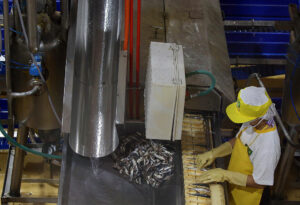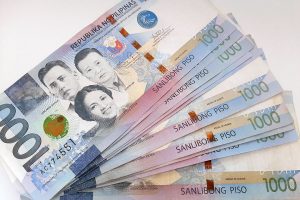Headline inflation accelerated to a six-month high in September, mainly due to costlier fuel and vegetables, but remained below the central bank’s 2-4% target, the Philippine Statistics Authority (PSA) said on Tuesday.
Preliminary data from the PSA showed the consumer price index quickened to 1.7% in September from 1.5% in August, but eased from 1.9% in September 2024.
This was the fastest inflation rate since 1.8% in March.
It was also within the Bangko Sentral ng Pilipinas’ (BSP) 1.5-2.3% forecast for the month, but below the 1.9% median estimate in a BusinessWorld poll last week.
September also marked the seventh straight month that inflation settled below the BSP’s 2-4% target.
In the nine months to September, inflation averaged 1.7%, easing from 3.4% in the same period last year.
Meanwhile, core inflation, which excludes volatile prices of food and fuel, eased to 2.6% in September from 2.7% in August. Still, it was faster than the 2.4% clip a year earlier.
Core inflation averaged 2.4% in the nine-month period, slowing from 3.1% in the same period last year.
National Statistician Claire Dennis S. Mapa said the September inflation print was “not a surprise” as recent typhoons drove vegetable prices higher.
“This September, there were no surprises because, of course, we expected the large increase to be in vegetables, but we already saw that in August; it just continued into the month of September,” Mr. Mapa said in mixed English and Filipino. “This is still the effect of the flooding and typhoons we experienced in July. There were really many typhoons then.”
According to the PSA, the transport index was the main driver of faster inflation in September, picking up to 1% from a 0.3% decline the previous month. In September, gasoline declined at a slower pace of 0.9% from 6.1% in the previous month, while diesel quickened to 5.1% from a 0.8% fall.
The heavily weighted food and nonalcoholic beverage index rose to 1% in September, picking up from 0.9% in August.
Food inflation quickened to 0.8% in September from 0.6% the previous month, but slower than 1.4% a year ago.
This was mainly driven by a year-on-year rise in vegetables, tubers, plantains, cooking bananas and pulses at 19.4% in September from 10% in August. This was the fastest pace in vegetable inflation in nine months or since 21.1% in January.
On the other hand, corn saw a slower annual decline of 4.5% from 11.8% in August.
“What we really saw were rain and flooding, particularly in our vegetable-producing provinces,” Mr. Mapa said. “So, this had an impact in August and continued into September.”
“We see that this may continue in the coming months because we have had storms again in the past month. It is possible that our inflation rate will remain somewhat elevated,” he added.
Last month, typhoons Mirasol, Ragasa (locally known as Nando) and Bualoi (Opong), coupled with the southwest monsoon, brought heavy rains and flooding in parts of the country.
“The slight uptick in inflation underscores the sensitivity of domestic food prices to supply disruptions,” Department of Economy, Planning, and Development Secretary Arsenio M. Balisacan said in a statement. “We are working closely with various agencies to stabilize supply, keep essential goods affordable, and safeguard household welfare.”
Rice deflation continues
Meanwhile, the decline in rice prices moderated in September, with the annual rate easing to -16.9% from -17% in August. September marked the ninth straight month of rice deflation.
“Rice prices generally continued to decline due to adequate supply, lower international rice prices, and government measures to stabilize prices,” the BSP said in a statement.
The average price of local regular milled rice slipped by 1.02% month on month to PHP 37.79 per kilo in the last week of September from PHP 38.18 per kilo, based on data from the Agriculture department.
Well-milled rice also dropped by nearly 1% to PHP 43.10 per kilo from PHP 43.52, while special rice rose by 0.2% to PHP 57.10 per kilo from PHP 56.99.
On Sept. 1, the National Government implemented a 60-day import ban on regular and well-milled rice to address falling farmgate prices of unmilled rice.
On the other hand, meat inflation slowed to 6% from 7.1% in August, while fish and other seafood prices also cooled to 7.9% from 9.5%.
Meanwhile, inflation in the National Capital Region (NCR) slowed to 2.7% in September from 2.9% in August. However, it was quicker than 1.7% in September 2024.
Outside NCR, inflation accelerated to 1.5% from 1.1% in August, but slower than the 2% clip a year ago.
Central Visayas remained the region with the highest inflation rate at 4.1%, while the Bangsamoro Autonomous Region in Muslim Mindanao saw the biggest decline in prices at -1.5%.
For the bottom 30% of income households, inflation saw a slower annual decline to -0.2% from -0.6% in August. The nine-month average stood at 0.3% from 4.6% a year ago.
Outlook
Despite emerging risks to inflation, the central bank said inflation will likely average below the 2-4% target this year, mainly due to easing rice prices.
“Nonetheless, higher rice tariffs and rising global food prices could raise supply-side pressures over the policy horizon. Meanwhile, higher electricity rates could be offset by expectations of subdued global oil prices owing to a stable production outlook,” the BSP said.
The BSP sees inflation averaging 1.7% this year.
Union Bank of the Philippines Chief Economist Ruben Carlo O. Asuncion said the below-expectation inflation print could prompt the BSP to cut interest rates on Thursday.
“Growth has been especially uncertain lately and we think that the BSP would be delivering a cut to pre-empt downside risks to growth in general,” he said. “So, lower-than-expected (inflation) gives more reason for BSP to cut now and not run the risk of being behind the curve.”
However, Chinabank Research sees emerging inflation risks as a signal for the central bank to pause at its upcoming meeting.
“While overall price growth is still expected to remain low for the rest of the year, increased upside risks to the inflation outlook could prompt the BSP to adopt a more cautious stance and keep interest rates on hold at Thursday’s policy meeting,” it said in a note.
John Paolo R. Rivera, a senior research fellow at the Philippine Institute for Development Studies, said developments in rice supply and transport costs will continue to drive inflation in the coming months.
“In the coming months, inflation may continue to edge higher due to risks such as weather-related supply disruptions, holiday spending, the global oil price situation, and a weak (peso) that could raise import costs,” he said in a Viber message.
A BusinessWorld poll showed 10 of 16 analysts expect the Monetary Board to keep rates steady at 5% on Thursday.
BSP Governor Eli M. Remolona, Jr. earlier said the policy rate is now at their “Goldilocks” rate or “sweet spot” for both inflation and output. However, he said last month that they are open to cutting rates again this October if the country’s economy weakens due to slow demand. — Katherine K. Chan







 DOWNLOAD
DOWNLOAD














